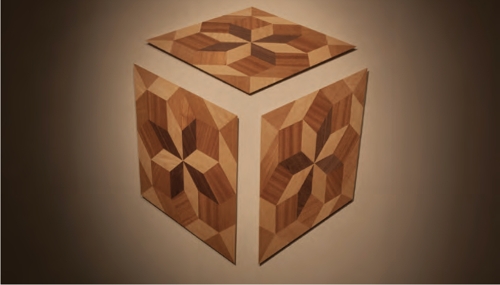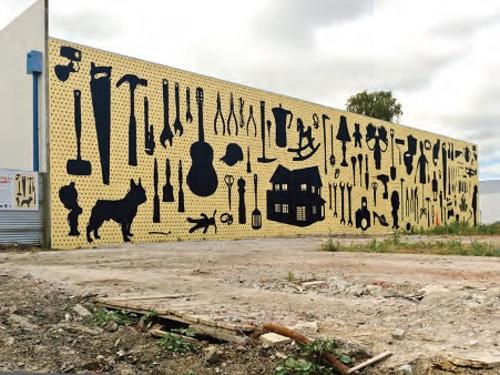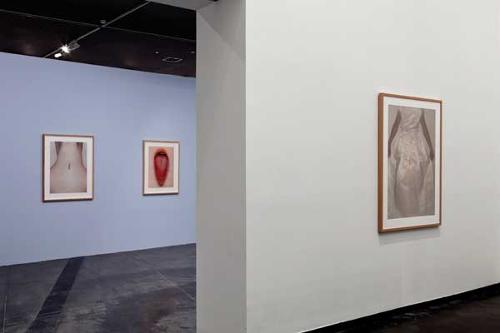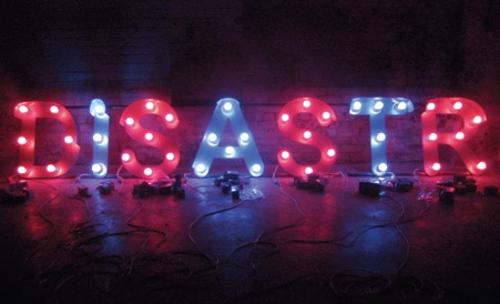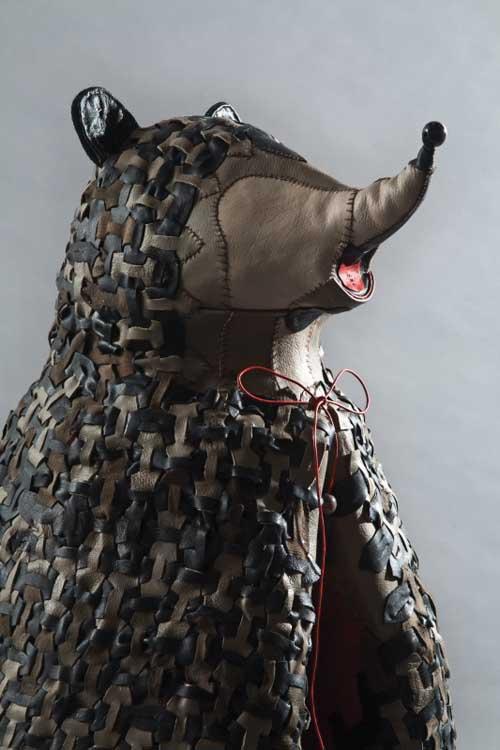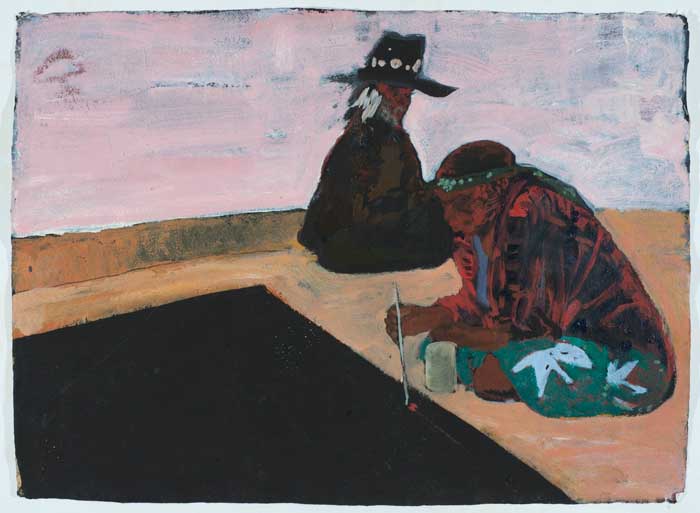
This review is less about an exhibition than about its positioning in the fraught area of cross-cultural debate. Its potency lies in its journey and what it collectively has to say about cross-cultural engagement, and the development of "mutually beneficial intersubjective relationships". Through this exhibition the three curators aimed to create a clearing for a forward-thinking conversation around the idea that “since the late 20th century opportunities to engage with Aboriginal art, its makers and their communities have naturally and inevitably informed Western art approaches to art making in this country”.
In previous decades such discussions - on cultural convergence and collaborations – have largely been stalled by what Ian Mclean refers to in one of the many scholarly essays in the excellent exhibition catalogue as “the politics of disengagement” – or the fear of engagement. Many remain shackled by the long shadow of colonialism and choose to see the spectre of exploitation and appropriation lurking in all forms of partnerships, regardless of the facts, “giving the impression that there can be no 'legitimate exchange'” as Marcia Langton observes in her pivotal catalogue essay. This exhibition is located in a space she refreshingly refers to as an “in between space...a space that belongs as much to those settler Australians who reject the dogma of terra nullius as it does to Aboriginal people”.
The journey of this exhibition to the Flinders University City Gallery was characterised by sheer strength of character and integrity galvanised by some unexpected opposition. It involved an unswerving commitment to an acknowledgement of the myriad collaborations of all kinds that occur daily in all sectors and levels of the Australian art world. roads cross has soul and spine.
It should not surprise anyone that Flinders University Art Museum (FUAM), though on solid ground, knew that it was wading into choppy waters but went ahead undeterred. Since its inception in the 1970s FUAM has established itself as a national leader in promoting Aboriginal art through epochal changes in its production and reception. This exhibition is not only a natural extension of FUAM's long-held interest in art created at the intersection of Indigenous and settler traditions in Australia, but an obligation. Realised in partnership with Charles Darwin University Art Collection and Art Gallery, the role of the University Art Museum to grapple with complex and difficult ideas is brought to the fore.
I was blown away by the eclectic nature of the exhibition and its layers of stories particularly the way the works functioned as portals into black/white relationships and life experience. It did not look or feel remotely like an Aboriginal ‘influenced’ art exhibition. It was refreshingly original by including recent works by 16 non-Indigenous artists whose lives have involved significant interactions with Aboriginal communities, Country and/or art. Four Aboriginal artists: Pura-lia Meenamatta (Jim Everett), Yaritji Connelly, Nyukana Baker and Molly Nampitjin Miller are represented as co-creators of works while two prints by the late Rover Thomas (Joolama) of his crossroads motif reveal the inspiration for the exhibition’s title and visually flag its central theme.
The quality and diversity of styles and content across two and three-dimensional media is reflective of the nature of each artist’s engagement and concerns. Some are politicised, such as Alison Alder’s prints on the social impact of the Intervention, sensitised by a decade of working on communities in several states. Other works are about cultural collision, embodied in Broken things reveal an important story, a floor assemblage of slip cast replicas of rubbish by Gus Clutterbuck who has been artist-in-residence in schools at Ernabella and Amata on the APY Lands. Tobias Richardson, who was a teacher at Utopia and Maningrida, paints on vernacular architecture and transforms discarded debris from buildings, such as plastic louvres already marked by locals, to develop a direct relationship between practice, media and place. Una Rey, after working for years in art centres at Haasts Bluff, Milikapiti and Balgo, explores concepts of belonging and place in relation to her childhood home on the land in NSW, while Hossein Valamanesh elegantly fuses elements of his Iranian background with an Indigenous experience that has proved pivotal to making Australia his home.
Unlike the amazing 25 year visual conversation in which Michael Jagamara Nelson and Imants Tillers have been engaged in, this is a new chapter in artistic engagement. It is not about race or gender but Australian artists meeting in “mutual productivity”. As stalwart curator Fiona Salmon said at the opening, the exhibition is really about opening the debate, not closing it down.
(roads cross will be on show at Charles Darwin University Art Gallery, Darwin, 22 November 2012 – 22 February 2013.)

